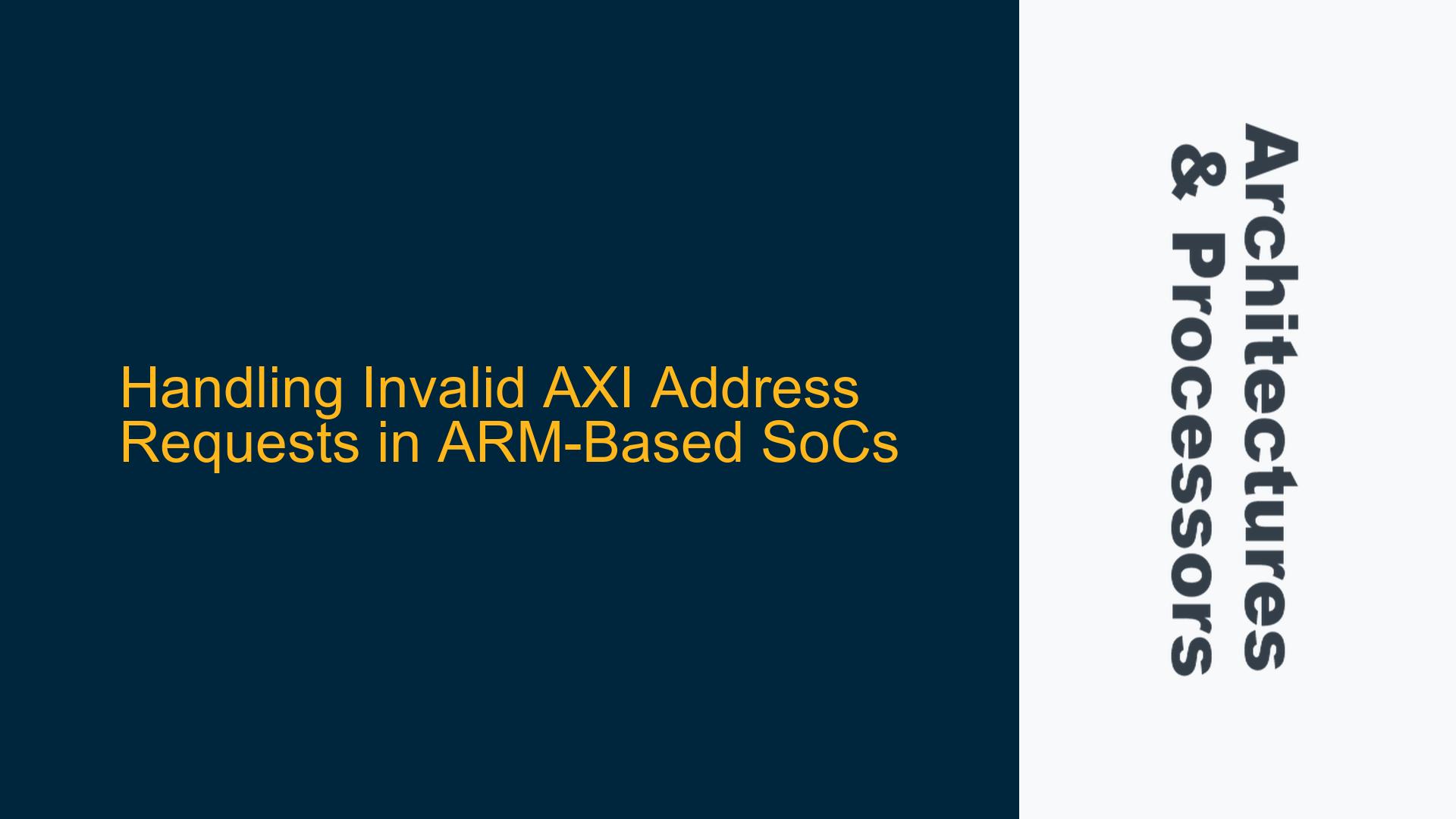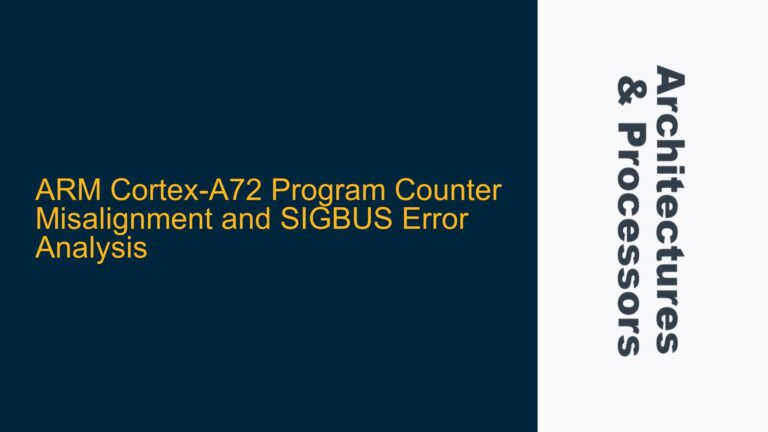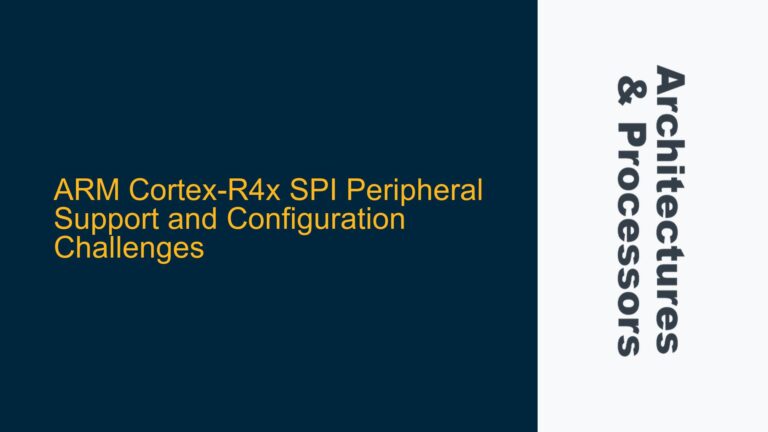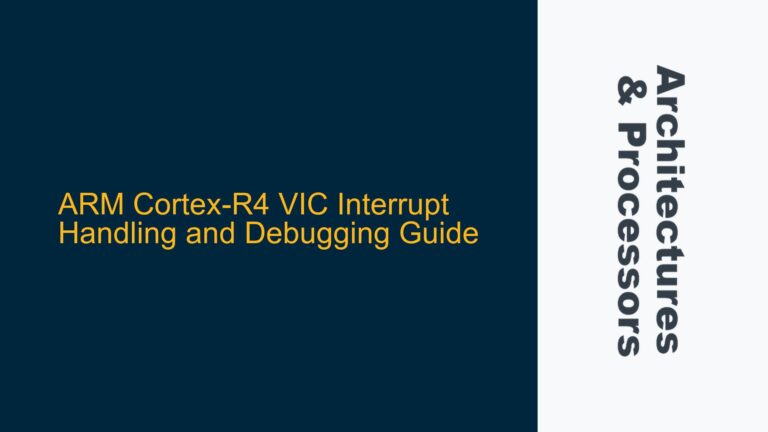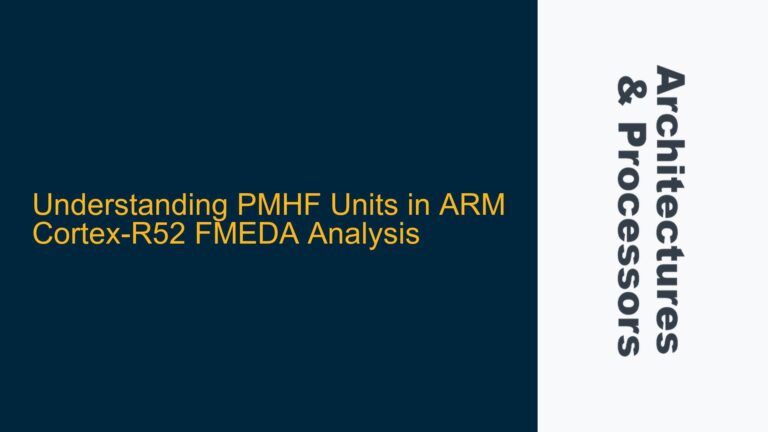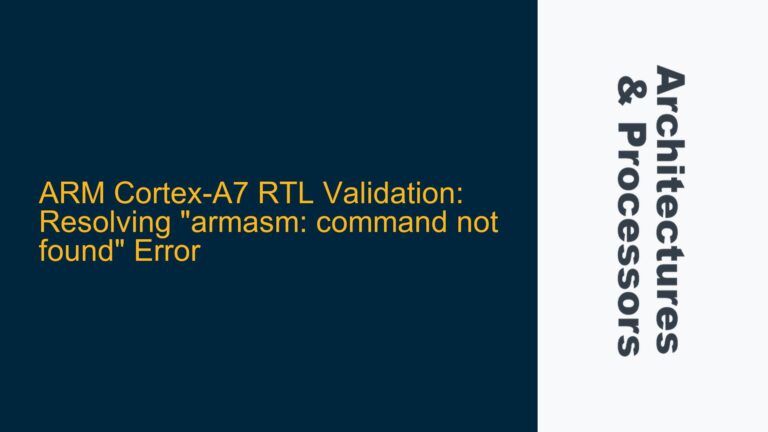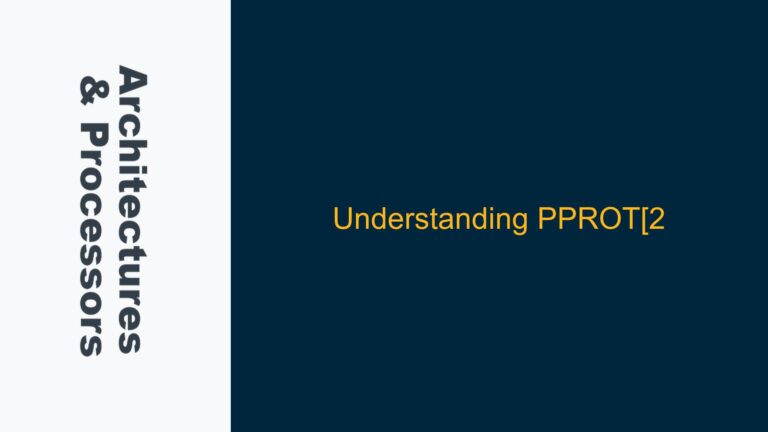AXI Crossbar Address Decoding and DECERR Response Mechanism
In ARM-based System-on-Chip (SoC) designs, the Advanced eXtensible Interface (AXI) protocol is widely used for high-performance communication between masters and slaves. One critical aspect of AXI-based systems is handling invalid address requests, which can occur when a master attempts to access an address that does not map to any valid slave in the system. The AXI crossbar interconnect plays a pivotal role in managing these scenarios. The crossbar contains address decoders that determine which slave, if any, should receive a transaction based on the address provided by the master. When an address does not fall within any defined address range of the connected slaves, the crossbar must handle this invalid request appropriately.
The ARM AXI protocol specifies a mechanism for signaling such errors through the use of a DECERR (Decode Error) response. When the crossbar detects an invalid address, it generates a DECERR response on the read or write response channel (RRESP or BRESP, respectively). This response is propagated back to the master, indicating that the transaction could not be completed due to an address decoding failure. The DECERR response is part of the AXI protocol’s error signaling framework, which also includes SLVERR (Slave Error) for slave-specific errors and OKAY for successful transactions.
The DECERR response is typically generated by the crossbar’s address decoding logic. This logic compares the incoming address from the master against the address ranges assigned to each slave in the system. If no match is found, the crossbar concludes that the address is invalid and issues a DECERR response. This mechanism ensures that the master is informed of the error, allowing it to take appropriate action, such as triggering a bus fault exception in the case of a Cortex-M processor.
However, the handling of invalid addresses is not solely the responsibility of the crossbar. The AXI master must also be designed to interpret and respond to DECERR responses correctly. For example, in a Cortex-M system, a DECERR response might result in a bus fault exception being raised, depending on the configuration of the processor’s fault handling mechanisms. The master’s behavior in response to a DECERR is critical for ensuring system stability and debugging invalid access attempts.
Potential Causes of Invalid AXI Address Requests
Invalid AXI address requests can arise from several sources, ranging from software bugs to hardware misconfigurations. Understanding these causes is essential for diagnosing and resolving issues related to invalid address handling in AXI-based systems.
One common cause of invalid address requests is software errors. For instance, a pointer dereference in a C program might result in an out-of-bounds memory access if the pointer is not properly initialized or if it points to an invalid memory location. In such cases, the processor’s AXI master might issue a transaction with an address that does not correspond to any valid slave in the system. This scenario is particularly common during the development and debugging phases of software, where uninitialized variables or incorrect pointer arithmetic can lead to unintended memory accesses.
Another potential cause is hardware misconfiguration. During the integration of an SoC, the address maps for the various slaves must be carefully defined and programmed into the crossbar’s address decoding logic. If the address ranges are incorrectly specified, the crossbar might fail to route transactions to the intended slaves, resulting in DECERR responses. For example, if a peripheral’s base address is incorrectly configured in the crossbar, any attempt to access that peripheral will result in an invalid address request.
In some cases, invalid address requests might be intentional. For example, in secure systems, certain address ranges might be reserved for future use or protected from unauthorized access. If a master attempts to access these reserved or protected ranges, the crossbar might deliberately return a DECERR response to prevent the transaction from proceeding. This approach can be used as a security measure to obscure the existence of certain memory regions or peripherals from potential attackers.
Additionally, timing issues in the system can lead to invalid address requests. For instance, if a master issues a transaction before the address decoding logic in the crossbar is fully initialized, the crossbar might misinterpret the address and generate a DECERR response. Similarly, clock domain crossing issues between the master and the crossbar can result in address decoding errors if the address signals are not properly synchronized.
Troubleshooting Invalid AXI Address Requests and Implementing Robust Solutions
Addressing invalid AXI address requests requires a systematic approach that combines debugging, configuration verification, and design optimizations. The following steps outline a comprehensive strategy for troubleshooting and resolving issues related to invalid address handling in AXI-based systems.
First, it is essential to verify the address mapping configuration in the crossbar. This involves checking that the base addresses and address ranges for all slaves are correctly defined in the crossbar’s address decoding logic. Any discrepancies in the address map can lead to DECERR responses, so it is crucial to ensure that the configuration matches the intended design. This verification can be performed using simulation tools or by inspecting the crossbar’s configuration registers during runtime.
Next, the behavior of the AXI master in response to DECERR responses should be analyzed. In the case of a Cortex-M processor, this involves examining the processor’s fault handling mechanisms. The processor should be configured to raise a bus fault exception when a DECERR response is received, allowing the software to handle the error appropriately. The fault handler can log the error, provide debugging information, and take corrective action, such as terminating the offending process or resetting the system.
To prevent software-related invalid address requests, rigorous testing and debugging of the software are necessary. This includes static code analysis to identify potential pointer issues, as well as dynamic testing to catch runtime errors. Tools such as memory sanitizers can be used to detect out-of-bounds memory accesses and other common software bugs that might lead to invalid address requests.
In systems where security is a concern, the handling of invalid address requests can be enhanced by implementing additional protection mechanisms. For example, access control lists (ACLs) can be used to restrict access to certain address ranges, ensuring that only authorized masters can access sensitive peripherals or memory regions. Additionally, the crossbar can be configured to return a DECERR response for any access to reserved or protected address ranges, further obscuring their existence from potential attackers.
Finally, timing issues that might lead to invalid address requests should be addressed through careful design and verification. This includes ensuring that the address decoding logic in the crossbar is properly initialized before any transactions are issued, as well as verifying that clock domain crossing issues are resolved. Simulation and formal verification tools can be used to identify and correct timing-related issues during the design phase, reducing the likelihood of invalid address requests occurring in the final system.
By following these steps, designers can effectively troubleshoot and resolve issues related to invalid AXI address requests, ensuring the stability and security of ARM-based SoCs. The combination of thorough verification, robust error handling, and careful design practices is essential for building reliable and high-performance systems.
